PL-10s on wingtip pylons
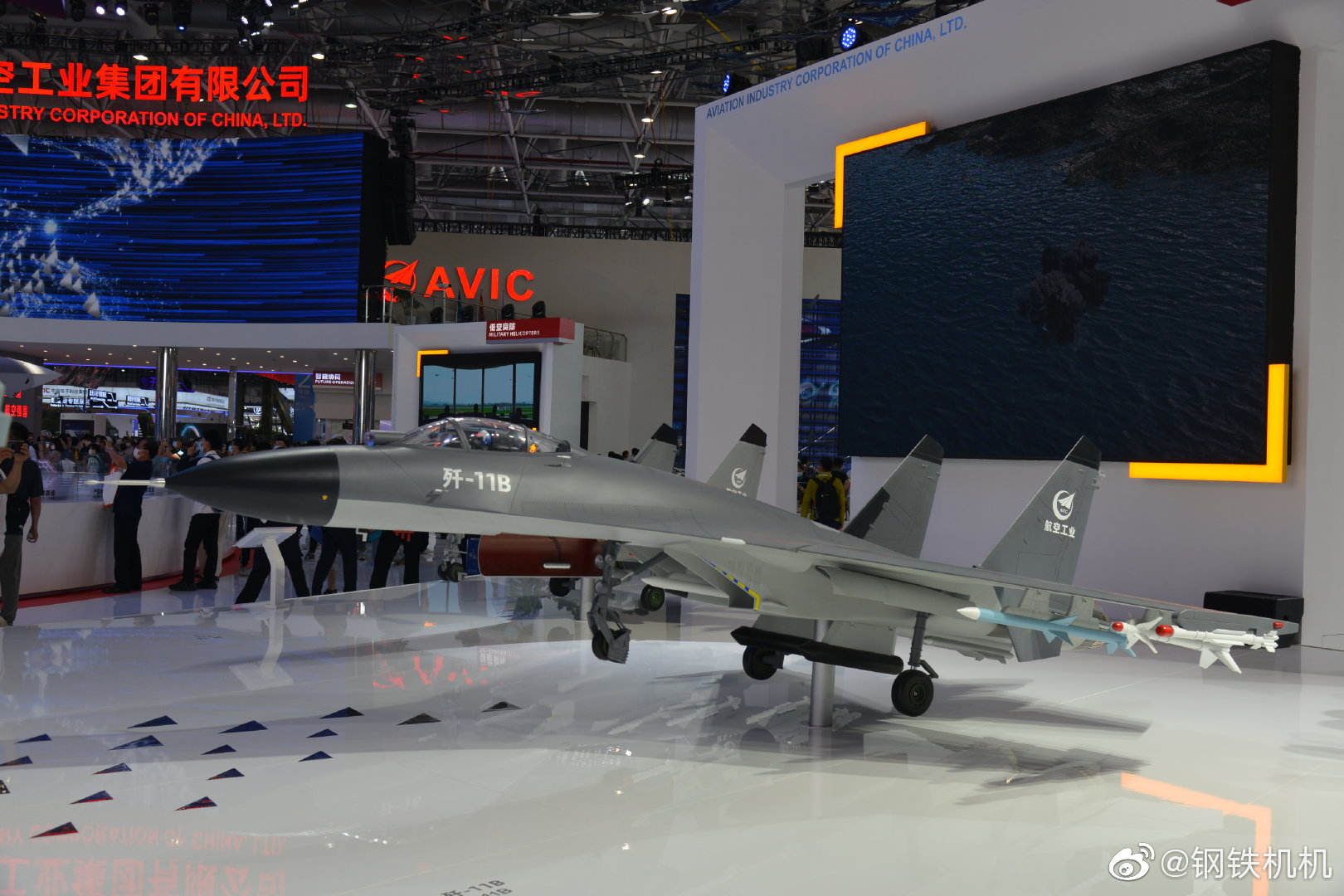
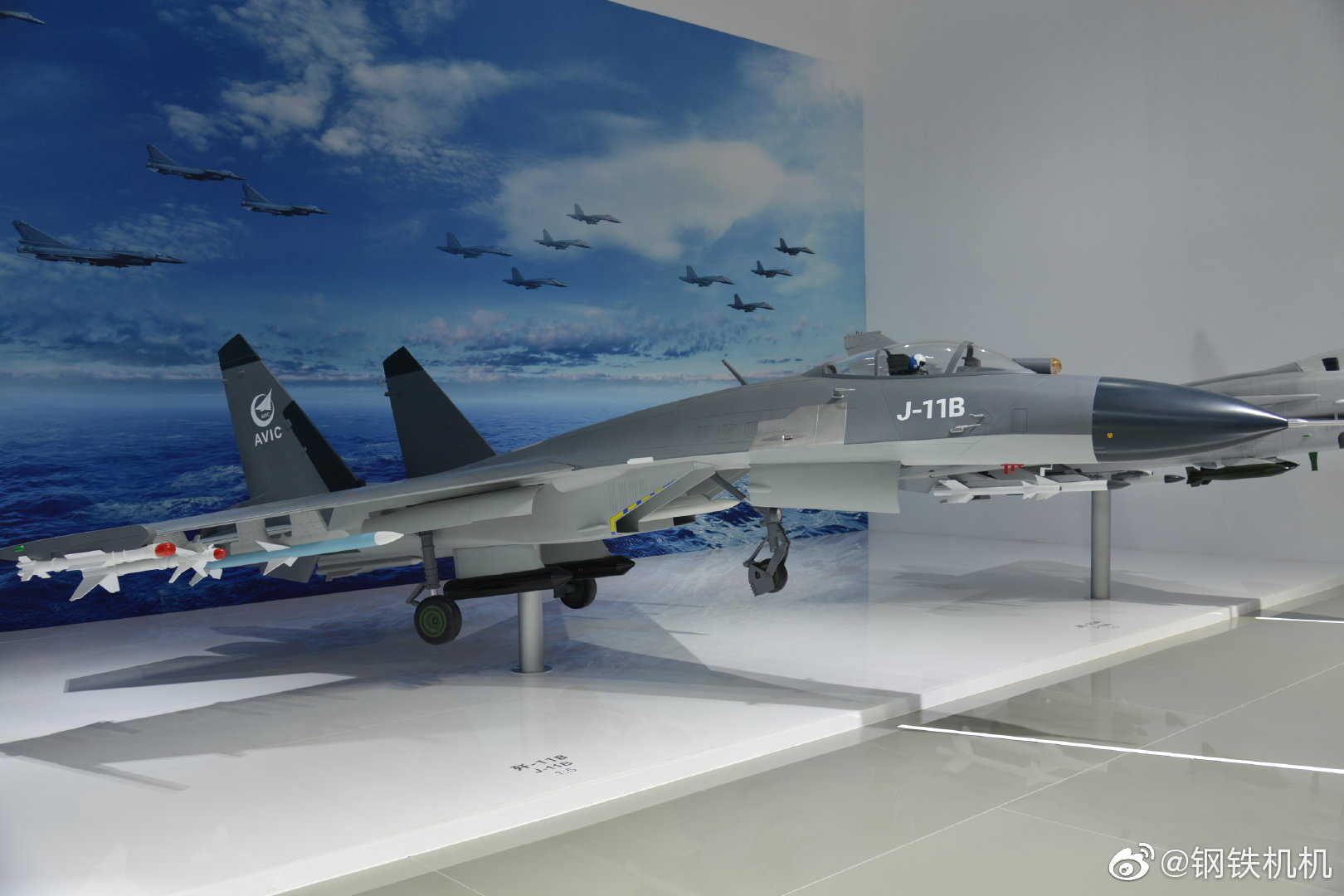
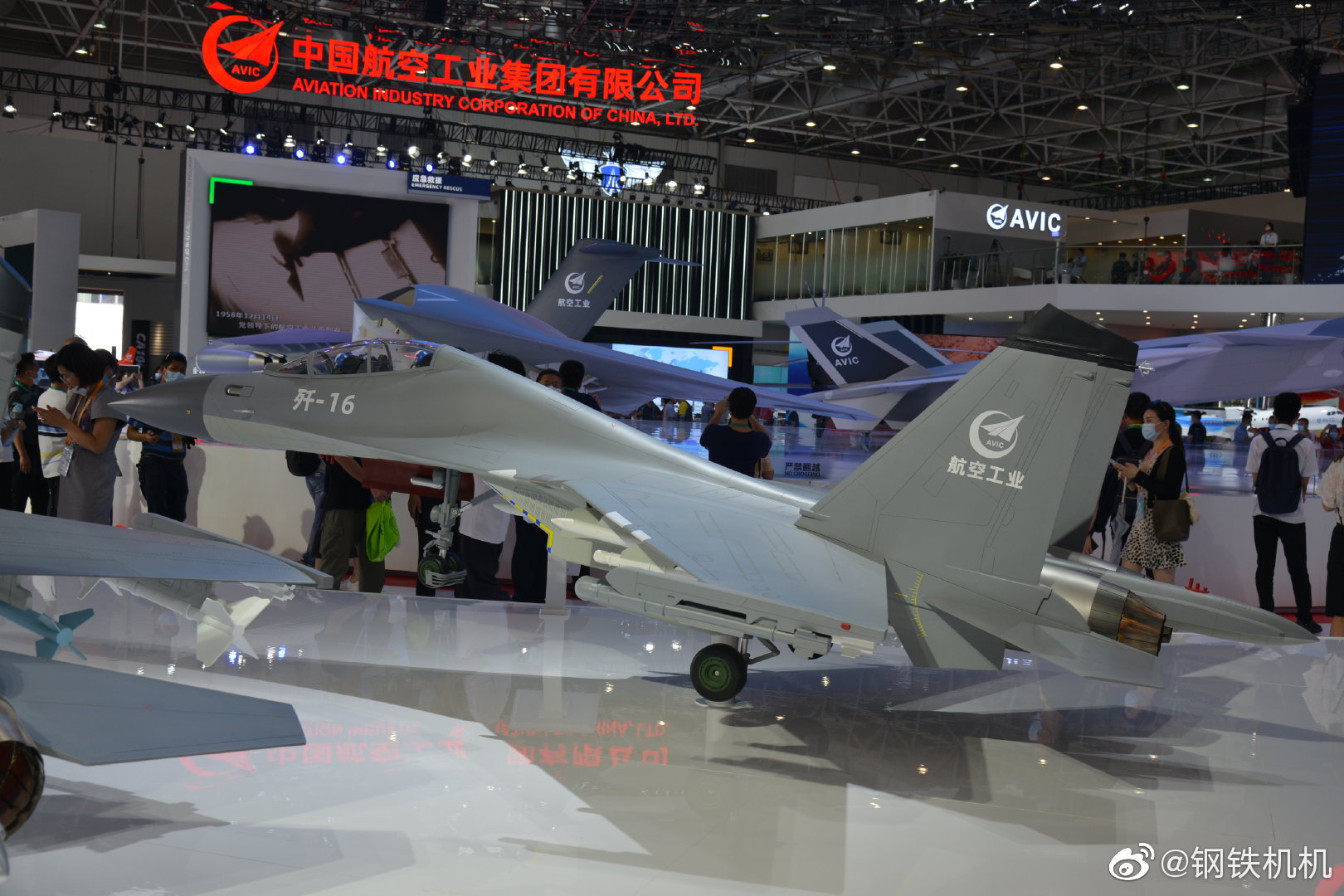
I expect the PL-10 to be the PLAAF's and PLANAF's Fox 2 missile as PL-8 stocks are depleted.
PL-10s on wingtip pylons



I expect the PL-10 to be the PLAAF's and PLANAF's Fox 2 missile as PL-8 stocks are depleted.
Are you saying you don't think the PLANAF will introduce J-16s, or that the PLANAF will introduce J-16s and not transfer them over to the PLAAF?
I assume you mean the former, per the rest of your post.
If that's the case, it is also a reasonable position. My underlying belief is that I think the PLANAF will eventually transition to a combat aviation fleet primarily composed of fighters that are carrier compatible.
But as it seems, the PLAAF does it ... there are at least two J-16s seen at Nanchang - 40th AB - with substantially larger pods and IMO these are J-16D
View attachment 77939
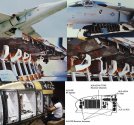
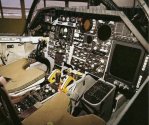
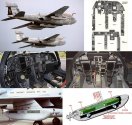
Is it not already confirmed that PLANAF are ordering J-16?No, I don't think PLANAF will introduce J-16s.
I think that the only reason why it currently operates land-based aircraft is because of lack of carrier-based aircraft and carriers. Liaoning was commissioned in 2012 and J-15 was introduced in 2013. Because J-15 was built using knowledge reverse-engineered from Su-33 acquired from Ukraine, and Su-33 is not a good naval aircraft, China did not produce large quantities of J-15 before they learnt through practice what a good naval aircraft is.
If you look at Russia's struggles with both Su-33 and MiG-29K it is obvious that it difficult to guess the design if you don't have a working carrier and practical experience. Because air cover needed to be provided PLANAF operates long-range J-11BH in the Southern theater. J-11BH was the temporary measure and I think it was the last temporary measure that PLAN intends to use.
I also think it is PLA's explicit intention to prevent overlap of PLAAF and PLANAF capabilities and aircraft fleets as this only happens in militaries with politically-driven inter-service rivalry like in the US and Imperial Japan. If you keep the services separate in terms of doctrine and goal you keep the separate in terms of political ambition. If PLANAF's doctrinal purpose is to provide air cover for PLAN ships then this is what PLANAF will be limited to so that there's no temptation to create "expeditionary aviation" (PLANAF) and "defense aviation" (PLAAF) which would be disruptive to internal cohesion and planning.
Also if J-XY is produced at Shenyang then it is in PLAN's interest to limit orders from Shenyang for current designs. They can't do it with J-15B because these will serve as training aircraft for CATOBAR aviation but every J-16 that they don't order can go to PLAAF and provide rationale to order J-XY which really can't come any sooner. There might not even be any large-scale J-15B production and as soon as two units are provided for Type 003 they'll go straight to J-XY.
This is a picture of an aircraft at a base. It is not a picture of an official document assigning J-16D to the unit stationed at that base.
Obviously a J-16D will have to be stationed with a J-16 unit for the duration of practical tests, to develop tactics, to test logistical chains etc. The important question is what happens once those tests are complete.
However since my previous post I had some time to think and I looked up some data and I am no longer convinced that creating separate J-16D brigades is the only way forward. Some thoughts on that - and as it is in no way obvious at this moment which is better - here are both arguments:
Q: Why keep J-16D separate?
A: Because of historical precedent and logistical constraints.
EW aircraft are much more complex than regular combat aircraft because the electronic equipment is the most vulnerable part of the machine. EW relies on accuracy of signal and the signal is generated by elements that do wear out with use. A high-power signal can damage the delicate electronics. Even accounting for pods J-16D still has elements which are part of its airframe. Therefore all other things being equal the readiness of J-16D will be always lower than J-16.
Consider EF-111A. It was introduced in 1983 and retired in 1998 after less than 15 years in service on average. The main reason was retirement of F-111 from service which made supporting 42 planes uneconomical but it wasn't liked as EW platform either. It was considered difficult to maintain because the EW equipment was entirely encased inside the plane's airframe.
View attachment 77965
It was difficult to operate because unlike Navy's EA-6B with three EWO (Electronic Warrant Officer) stations it had only one, aided by the automation available at the beginning of the 80s.
View attachment 77966
EA-6B served for 53 years because it was simpler and more modular with its main offensive payload - the AN/ALQ-99 pod being external - as well it was more robust tactically with three people handling the mission instead of one.
View attachment 77967
Prowlers were so good in their mission that they served 20 years beyond the life of the main airframe. USN retired Intruders in 1993 and Prowlers in 2015, USMC retired Intruders in 1997 and Prowlers in 2019(!). EF-111A was retired only 2 years after F-111F. What I mean to say with this example is this: the more of equipment is inside of the aircraft the more it is like the Raven and not like the Prowler.
If you keep J-16Ds with the J-16 unit your overall readiness drops to the readiness of J-16D which will be lower than of regular J-16 for the reasons stated above. If you lack aircraft for a mission you need to borrow them from another unit. If you have 4 J-16D in a brigade and 3 are in maintenance you have only 1 ready. If you need two for a mission you can do zero missions.
If you keep J-16D separate you gain flexibility of deployment. A J-16D brigade with 24 aircraft in which 3 out of every 4 planes are in maintenance still has 6 aircraft ready for mission. If the mission requires two planes those are three missions successfully performed.
There's also existing precedent for that kind of organization in America and in Russia:
USN retains all EA-18G and if USAF or USMC require EW support it is provided by USN. USAF even shares personnel in one of the USN squadrons and keeps one squadron in reserve that nominally is assigned to Growlers - probably to retain institutional knowledge.
Russia uses Su-24MR which is a dedicated EW/ELINT/recon aircraft. Of all the units which use Su-24M only two units in Naval Aviation use both Su-24M and MR in the same base unit - the squadron. Russian regiments which superficially seem similar to PLA's brigades are similar to American wings, although they are not the equivalent because of the size of the squadron (10-16). Each regiment is composed of 2 or 3 squadrons.
The mixed units are 43rd Attack Regiment in the Black Sea Fleet (Crimea) and 4th Attack Regiment in the Baltic Fleet (Kaliningrad). All other units function as recon squadrons with just Su-24MR within mixed regiments (2 Rgt in Central Military District, 98 Rgt in Northern Fleet, 11th and 37th Rgts in Southern Military District and separate 799 Sqn in Eastern district and 4th Sqn in Western district). All recon squadrons have 12 Su-24MRs while the two mixed squadrons have 4 Su-24MR and 10-12 Su-24M.
Q:Why keep J-16D together with J-16?
A: Because EW might become fundamental part of future warfare
If we were to apply the American thinking about fighter evolution then J-16 is obsolete due to its signature. However there are both passive and active ways of mitigating that signature and the countries which did not develop VLO aircraft fleets chose active measures.
The best example is Sweden which with Gripen E/F tried introducing a different concept of operating its aircraft. The single-sea Gripen E would serve as the primary combat aircraft while the twin-seat Gripen F as a command and EW aircraft. Gripens would operate in teams of at minimum 4 aircraft to retain the proportion of 3 single-seat to 1 twin-seat plane that is used for training purposes. This has been already tested with upgraded JAS 39C/D and the results were considered satisfactory to the Swedish AF but I don't know if Swedish government approved the necessary funding to make it happen.
The J-16 and J-16D could operate in a similar fashion to provide persistent EW protection. J-16D will naturally be the most survivable aircraft and it will be in the best position to utilize anti-radiation missiles as well as provide passive AEW thus serving as AWACS.
Another benefit is creating mesh networks for missile guidance - J-16 and J-16D could carry 3 YJ-12 each of which could use different mode of guidance and exchange this information with the others. The Soviets already used that approach for their long-range anti-ship missiles in the 70s and 80s. Since EW is still the main and most effective defense against anti-ship missiles it could greatly enhance their lethality but it won't work without J-16D to do the passive targeting.
Another example is the recent decision by the Russians to buy ~70 Su-34Ms and modernize the rest of the aircraft which will effectively turn all Su-34 into Su-24MR equivalents capable of carrying EW pods and regular munitions depending on requirements. The crews will require training but perhaps it is just about having the necessary pool of aircraft.
In conclusion my instinctive assumption used past precedent in America as indication for the future in China. That's a fundamental error even if in the end my assumptions turn out correct.
It does however seem logical that if J-16Ds are produced in large numbers they will be integrated with J-16 units and if in smaller quantities then they'll be kept separate for logistical reasons.
Is it not already confirmed that PLANAF are ordering J-16?
No, I don't think PLANAF will introduce J-16s.
I think that the only reason why it currently operates land-based aircraft is because of lack of carrier-based aircraft and carriers. Liaoning was commissioned in 2012 and J-15 was introduced in 2013. Because J-15 was built using knowledge reverse-engineered from Su-33 acquired from Ukraine, and Su-33 is not a good naval aircraft, China did not produce large quantities of J-15 before they learnt through practice what a good naval aircraft is.
If you look at Russia's struggles with both Su-33 and MiG-29K it is obvious that it difficult to guess the design if you don't have a working carrier and practical experience. Because air cover needed to be provided PLANAF operates long-range J-11BH in the Southern theater. J-11BH was the temporary measure and I think it was the last temporary measure that PLAN intends to use.
I also think it is PLA's explicit intention to prevent overlap of PLAAF and PLANAF capabilities and aircraft fleets as this only happens in militaries with politically-driven inter-service rivalry like in the US and Imperial Japan. If you keep the services separate in terms of doctrine and goal you keep the separate in terms of political ambition. If PLANAF's doctrinal purpose is to provide air cover for PLAN ships then this is what PLANAF will be limited to so that there's no temptation to create "expeditionary aviation" (PLANAF) and "defense aviation" (PLAAF) which would be disruptive to internal cohesion and planning.
Also if J-XY is produced at Shenyang then it is in PLAN's interest to limit orders from Shenyang for current designs. They can't do it with J-15B because these will serve as training aircraft for CATOBAR aviation but every J-16 that they don't order can go to PLAAF and provide rationale to order J-XY which really can't come any sooner. There might not even be any large-scale J-15B production and as soon as two units are provided for Type 003 they'll go straight to J-XY.
This is a picture of an aircraft at a base. It is not a picture of an official document assigning J-16D to the unit stationed at that base.
Obviously a J-16D will have to be stationed with a J-16 unit for the duration of practical tests, to develop tactics, to test logistical chains etc. The important question is what happens once those tests are complete.
However since my previous post I had some time to think and I looked up some data and I am no longer convinced that creating separate J-16D brigades is the only way forward. Some thoughts on that below - and as it is in no way obvious at this moment which is better I provide both arguments:
Q: Why keep J-16D separate?
A: Because of historical precedent and logistical constraints.
EW aircraft are much more complex than regular combat aircraft because the electronic equipment is the most vulnerable part of the machine. EW relies on accuracy of signal and the signal is generated by elements that do wear out with use. A high-power signal can damage the delicate electronics. Even accounting for pods J-16D still has elements which are part of its airframe. Therefore all other things being equal the readiness of J-16D will be always lower than J-16.
Consider EF-111A. It was introduced in 1983 and retired in 1998 after less than 15 years in service on average. The main reason was retirement of F-111 from service which made supporting 42 planes uneconomical but it wasn't liked as EW platform either. It was considered difficult to maintain because the EW equipment was entirely encased inside the plane's airframe.
View attachment 77965
It was difficult to operate because unlike Navy's EA-6B with three EWO (Electronic Warrant Officer) stations it had only one, aided by the automation available at the beginning of the 80s.
View attachment 77966
EA-6B served for 53 years because it was simpler and more modular with its main offensive payload - the AN/ALQ-99 pod being external - as well it was more robust tactically with three people handling the mission instead of one.
View attachment 77967
Prowlers were so good in their mission that they served 20 years beyond the life of the main airframe. USN retired Intruders in 1993 and Prowlers in 2015, USMC retired Intruders in 1997 and Prowlers in 2019(!). EF-111A was retired only 2 years after F-111F. What I mean to say with this example is this: the more of equipment is inside of the aircraft the more it is like the Raven and not like the Prowler.
If you keep J-16Ds with the J-16 unit your overall readiness drops to the readiness of J-16D which will be lower than of regular J-16 for the reasons stated above. If you lack aircraft for a mission you need to borrow them from another unit. If you have 4 J-16D in a brigade and 3 are in maintenance you have only 1 ready. If you need two for a mission you can do zero missions.
If you keep J-16D separate you gain flexibility of deployment. A J-16D brigade with 24 aircraft in which 3 out of every 4 planes are in maintenance still has 6 aircraft ready for mission. If the mission requires two planes those are three missions successfully performed.
There's also existing precedent for that kind of organization in America and in Russia:
USN retains all EA-18G and if USAF or USMC require EW support it is provided by USN. USAF even shares personnel in one of the USN squadrons and keeps one squadron in reserve that nominally is assigned to Growlers - probably to retain institutional knowledge.
Russia uses Su-24MR which is a dedicated EW/ELINT/recon aircraft. Of all the units which use Su-24M only two units in Naval Aviation use both Su-24M and MR in the same base unit - the squadron. Russian regiments which superficially seem similar to PLA's brigades are similar to American wings, although they are not the equivalent because of the size of the squadron (10-16). Each regiment is composed of 2 or 3 squadrons.
The mixed units are 43rd Attack Regiment in the Black Sea Fleet (Crimea) and 4th Attack Regiment in the Baltic Fleet (Kaliningrad). All other units function as recon squadrons with just Su-24MR within mixed regiments (2 Rgt in Central Military District, 98 Rgt in Northern Fleet, 11th and 37th Rgts in Southern Military District and separate 799 Sqn in Eastern district and 4th Sqn in Western district). All recon squadrons have 12 Su-24MRs while the two mixed squadrons have 4 Su-24MR and 10-12 Su-24M.
Q:Why keep J-16D together with J-16?
A: Because EW might become fundamental part of future warfare
If we were to apply the American thinking about fighter evolution then J-16 is obsolete due to its signature. However there are both passive and active ways of mitigating that signature and the countries which did not develop VLO aircraft fleets chose active measures.
The best example is Sweden which with Gripen E/F tried introducing a different concept of operating its aircraft. The single-sea Gripen E would serve as the primary combat aircraft while the twin-seat Gripen F as a command and EW aircraft. Gripens would operate in teams of at minimum 4 aircraft to retain the proportion of 3 single-seat to 1 twin-seat plane that is used for training purposes. This has been already tested with upgraded JAS 39C/D and the results were considered satisfactory to the Swedish AF but I don't know if Swedish government approved the necessary funding to make it happen.
The J-16 and J-16D could operate in a similar fashion to provide persistent EW protection. J-16D will naturally be the most survivable aircraft and it will be in the best position to utilize anti-radiation missiles as well as provide passive AEW thus serving as AWACS.
Another benefit is creating mesh networks for missile guidance - for example one J-16 and one J-16D could carry 3 YJ-12 each of which could use different mode of guidance and exchange this information with the others. The Soviets already used that approach for their long-range anti-ship missiles in the 70s and 80s. Since EW is still the main and most effective defense against anti-ship missiles it could greatly enhance their lethality but it won't work without J-16D to do the passive targeting.
J-16 and J-16D working in tandem can also spread apart and form a bistatic radar network which will improve accuracy. In fact, the more the merrier.
Another example is the recent decision by the Russians to buy ~70 Su-34Ms and modernize the rest of the aircraft which will effectively turn all Su-34 into Su-24MR equivalents capable of carrying EW pods and regular munitions depending on requirements. The crews will require training but perhaps it is just about having the necessary pool of aircraft.
In conclusion my instinctive assumption used past precedent in America as indication for the future in China. That's a fundamental error even if in the end my assumptions turn out correct.
It does however seem logical that if J-16Ds are produced in large numbers they will be integrated with J-16 units and if in smaller quantities then they'll be kept separate for logistical reasons.
And I think I've already written too much. Have a great day.
